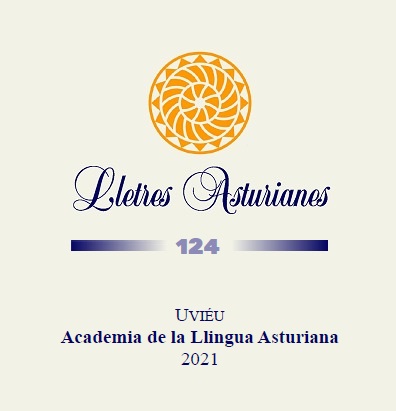Abstract
Although the translation of literary works into Asturian was an activity that already existed before the so-called Asturian Renaissance (Surdimientu), it was after mid-70s of the twentieth century, when this cultural and literary renaissance was born, when translation was at its peak. Various translations from English, French or Italian, among others, aimed at providing great literary works to Asturian readers, thereby making them available to a public whose first language was Asturian. There were a few non-literary translations as well.
This paper focuses on the particular case of drama, one of the genres with a very reduced number of translations, since the existence of abundant pieces of popular and appreciated literary costumbrismo overshadowed the arrival of new drama. Moreover, the data stems from the collection of published translations of dramatic works and dramatic texts translated and published in Lletres Asturianes and Lletres lliterariu, two journals of the Academy of the Asturian Language. This corpus will reveal a general overview of drama translation at the Asturian Renaissance, or Surdimientu, and deepen into aspects such as which were the main source languages, the authors whose works were translated and who were the translator.
References
Agost Canós, R. (2017). Literatura traducida, garante de la diversidad lingüística y cultural, Lletres Asturianes, 117, 39-61.
Álvarez, Ll. X. (1985). [Intervención en] Mesa redonda sobre’l Teatru Asturianu, Arfueyu, 14, 4-7.
Andrés, R. d’ (1992). La traducción a la llingua asturiana, Lletres Asturianes, 45, 21-34.
Bassnett, S. y Lefevere, A. (eds.) (1995): Translation History and Culture. London: Cassell.
Bolado, X. (2002). El Surdimientu. El Teatro. En M. Ramos Corrada (coord.), Historia de la Lliteratura Asturiana (pp. 695-715). Uviéu: Academia de la Llingua Asturiana.
Busto Cortina, X. C. (2002). Presencia de la llingua asturiana fuera d’Asturies en colecciones documentales ya obres impreses (sieglu XIX), Revista de Filoloxía Asturiana, 2, 97-154.
Cano González, A. Mª (1993): Zara, poema d’Antero de Quental, vertíu al asturianu por Teodoro Cuesta, Lletres Asturianes, 47, 145-148.
Díaz Suárez, L. (2000). El teatru n’asturianu na Universidá d’Uviéu, Lliteratura, 16, 35-43.
Fonticiella, P. (1994). Dalgunes cuestiones sobre la teoría y la práutica de la traducción, Lliteratura, 7, 44-49.
García Arias, X. Ll. (ed.) (2007). Lo Gayter del Llobregat, Joaquim Rubió y Ors. Tornes asturianes de 1889 de Marcelino Flórez de Prado, Bernardo Acevedo, Teodoro Cuesta. Uviéu: Academia de la Llingua Asturiana.
González, Ll. A. (2018). Telón de Fondo. L’abegosu camín de la normalización, Lletres Asturianes, 119, 161-168.
Ramos Corrada, M. (coord.) (2002). Historia de la Lliteratura Asturiana. Uviéu: Academia de la Llingua Asturiana.
Martino Ruz, X. (1997). Averamientu a dellos problemas de la traducción lliteraria al asturianu, Lliteratura, 11, 41-49.
Martino Ruz, X. (2003). Dieciocho años de traducción al asturianu. N’Actes del I Conceyu Internacional de Lliteratura Asturiana (CILLA). Uviéu, 5-6-7 y 8 de payares de 2001 (pp. 153-162). Uviéu: Academia de la Llingua Asturiana.
Santori, X. (2014). El surdimientu y la lliteratura n’asturianu: normalización y estandarización. Uviéu: Trabe.
Valdés Rodríguez, C. (2016). Un enfoque polisistémicu a la traducción d’obres al asturianu: normes y estratexes. Lletres Asturianes, 114, 101-118.

